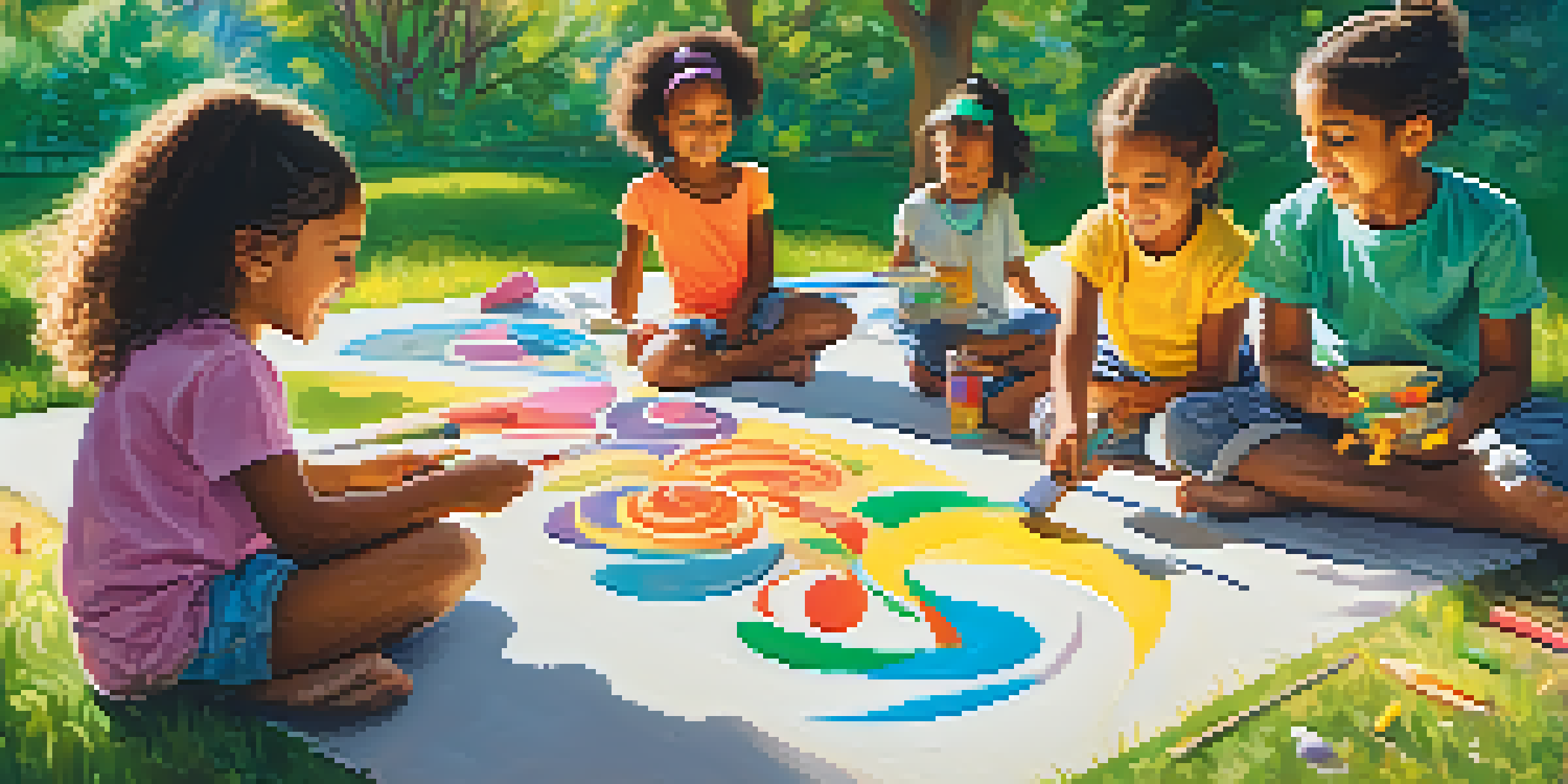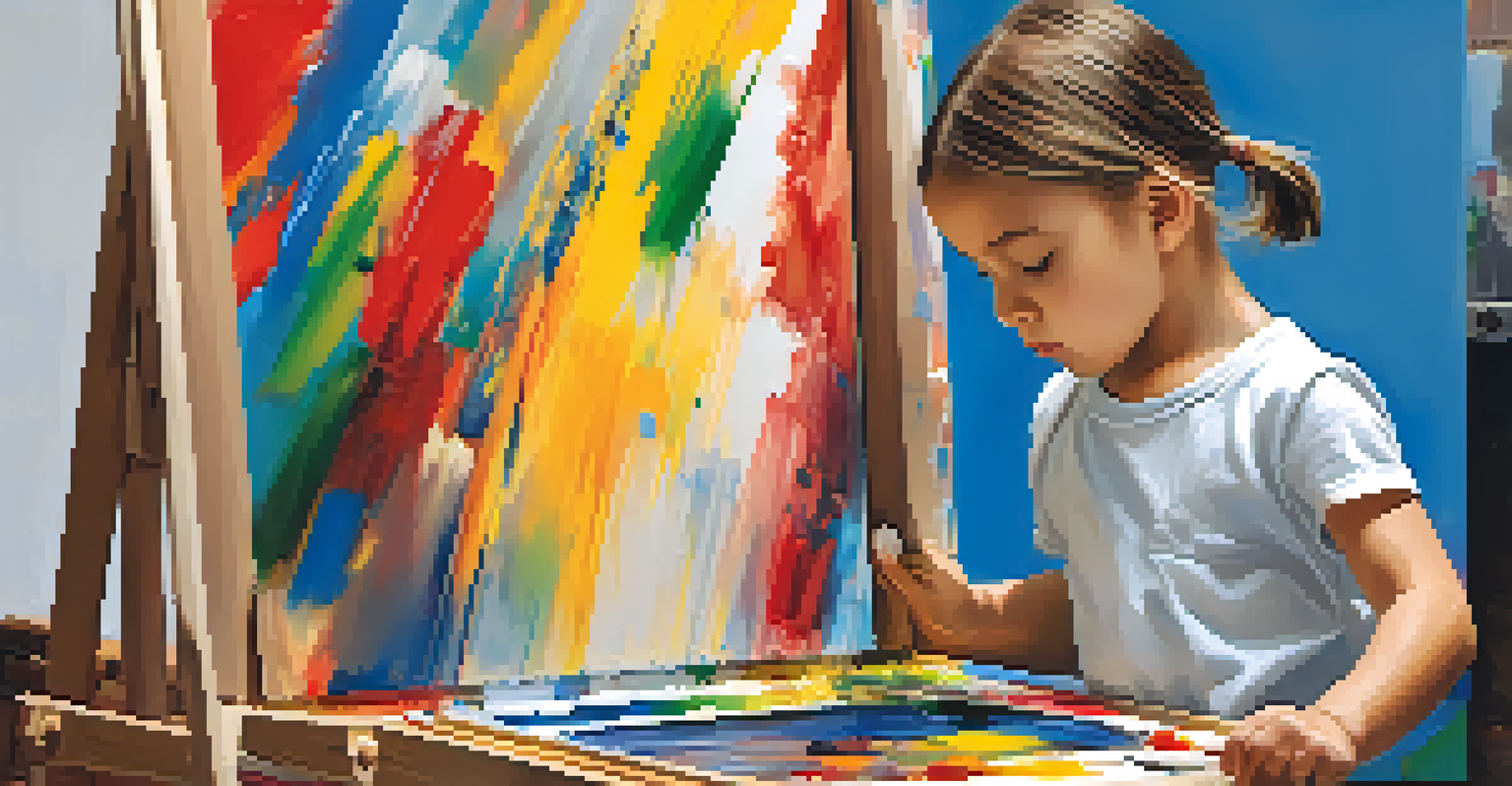How Painting Enhances Problem-Solving Skills in Kids

The Connection Between Art and Critical Thinking
When kids engage in painting, they tap into a creative process that enhances critical thinking. This artistic exploration encourages children to assess their choices, from color selection to composition, fostering a mindset that values thoughtful decision-making.
Art is not what you see, but what you make others see.
As they experiment with different techniques and styles, they learn to evaluate outcomes and adapt their approach. For instance, a child might mix colors to achieve a desired shade, requiring them to think critically about color theory and the results of their actions.
This practice of evaluating and adjusting not only sharpens their artistic skills but also translates into better problem-solving abilities in everyday situations, teaching them to approach challenges with a flexible mindset.
Encouraging Experimentation Through Painting
Painting encourages a safe space for experimentation, where mistakes are not only accepted but celebrated. When children spill paint or create unexpected results, they learn to view these moments as opportunities rather than failures.

This acceptance of trial and error promotes resilience and adaptability—key components of effective problem-solving. For example, a child might accidentally create a new pattern and decide to incorporate it into their art, fostering innovative thinking.
Art Boosts Critical Thinking Skills
Engaging in painting helps children develop critical thinking by encouraging them to assess choices and evaluate outcomes.
By embracing these unexpected outcomes, kids learn to approach problems from multiple angles, understanding that there isn't always a single 'right' solution.
Developing Patience and Focus Through Art
Painting requires time, patience, and concentration, all of which are essential for effective problem-solving. As children work on a painting, they must focus on details, allowing them to practice sustained attention and diligence.
Creativity takes courage.
This process teaches kids the importance of persistence. For instance, a child might spend hours perfecting a particular shade or brush stroke, learning that dedication can lead to rewarding results.
Such experiences help children understand that complex problems often require time and effort to solve, instilling a valuable work ethic that extends beyond the canvas.
Visualizing Solutions Through Art
Painting allows children to visualize problems and experiment with solutions, which is a powerful problem-solving technique. When faced with a dilemma, kids can express their thoughts and emotions through their artwork, creating a visual representation of their challenges.
This creative visualization helps children articulate their feelings and thoughts, making it easier for them to identify potential solutions. For example, a child might paint a scene that represents a conflict, allowing them to process emotions and explore resolutions artistically.
Experimentation Fosters Resilience
Through painting, children learn to embrace mistakes as opportunities, promoting resilience and innovative problem-solving.
Through this process, kids learn to break down complex issues into manageable parts, enhancing their ability to tackle challenges systematically.
Building Confidence Through Artistic Expression
Painting provides a platform for self-expression, significantly boosting a child's confidence. When kids create art, they develop a sense of ownership over their work, which fosters a belief in their abilities.
This newfound confidence translates into other areas of life, including problem-solving. A child who feels proud of their artwork is more likely to approach challenges with a can-do attitude, believing they can find solutions.
By showcasing their art to family or friends, children also learn to accept feedback, refining their ideas and enhancing their problem-solving skills through constructive criticism.
Collaborative Painting Experiences
Group painting activities can enhance problem-solving skills by fostering teamwork and collaboration. When children paint together, they must communicate their ideas and negotiate decisions, learning to listen and adapt to others' perspectives.
This collaboration helps kids develop social skills and emotional intelligence, both of which are crucial for effective problem-solving. For example, while working on a mural, children might face differing opinions on color choices, teaching them how to find common ground.
Art Encourages Team Collaboration
Collaborative painting activities enhance social skills and emotional intelligence, which are essential for effective problem-solving.
Through these shared experiences, kids learn that problem-solving is often a collective effort, and this understanding can lead to more innovative and inclusive solutions.
Linking Painting to Real-World Problem Solving
Finally, the skills developed through painting can be directly applied to real-world problem-solving scenarios. As children learn to think creatively and critically through art, they build a toolkit of strategies they can use in various situations.
For instance, a child who has learned to adapt their painting techniques may approach a math problem by considering multiple strategies to find the answer. This cross-disciplinary connection highlights the importance of creative thinking in all areas of life.

Ultimately, painting is more than just a fun activity; it equips children with essential skills that help them navigate challenges in school and beyond.